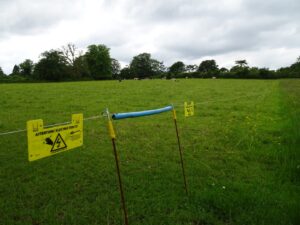Council fined for waste collection failures
- Investigation prompted by death of employee Steve Bishop
Chelmsford City Council has been fined £80,000 for waste collection safety failures, after a father-of-three died when he was struck by a bin lorry.
Steve Bishop, 37, passed away after being hit by the rear and underside of a bin lorry that was reversing down Osea Way, Chelmsford, on 8 December 2017.
Steve, who lived in Chelmsford, was working as a loader operative for Chelmsford City Council at the time of the incident.
Nickie Bishop, Steve’s partner, says her family will never get over his passing.
It is accepted the Council’s failings did not lead to the death of Mr Bishop. The incident did however, prompt a Health and Safety Executive (HSE) investigation. The workplace regulator found that Chelmsford City Council failed to effectively manage the risks presented by moving refuse vehicles, provide training and instruction for agency workers on safe procedures for reversing and the use of hand signals. The local authority also failed to effectively monitor its employees working practices.

HSE guidance can be found at: Collecting waste and recyclables (hse.gov.uk)
Nickie Bishop said: “I would like to reiterate the pain this has caused me and my boys. My boys’ dad will never be brought back from this tragic incident. Me and my sons shall never get over this.
“I hope more than anything that no other family ever has to go through this heartbreak, to have a knock on the door to say their partner who is hard at work and been run over.
“For me now, as my 11-year-old and nine-year-old bring up fond memories of their dad and family moments, I am having the difficult subject of my youngest son, who is five, asking about his dad, and why he is in the sky.”
Chelmsford City Council pleaded guilty to breaching Section 2(1) and Section 3(1) of the Health and Safety at Work Act 1974. The local authority was fined £80,000 and ordered to pay £61,065 in costs at Chelmsford Crown Court on 16 June 2023.
HSE inspector Saffron Turnell said: “Several health and safety management failings were identified by this public organisation which led to inconsistent systems of work and provision of training in the high-risk activity of waste collection. Nickie’s words make clear the impact Steve’s passing has had on the family and our thoughts remain with them.
“Local authorities and companies should be aware that HSE will not hesitate to hold to account those that fall below the required standards.”
This prosecution was supported by HSE enforcement lawyer Rebecca Schwartz.
Notes to Editors:
- The Health and Safety Executive (HSE) is Britain’s national regulator for workplace health and safety. We prevent work-related death, injury and ill health through regulatory actions that range from influencing behaviours across whole industry sectors through to targeted interventions on individual businesses. These activities are supported by globally recognised scientific expertise. www.hse.gov.uk
- More about the legislation referred to in this case can be found at: www.legislation.gov.uk/
- HSE works alongside the Waste Industry Safety and Health Forum who produces the industry guidance reversing in Waste Recycling Collections INFO-12.pdf (wishforum.org.uk)
- HSE news releases are available at http://press.hse.gov.uk
- Pictures of the bin lorry attached.


